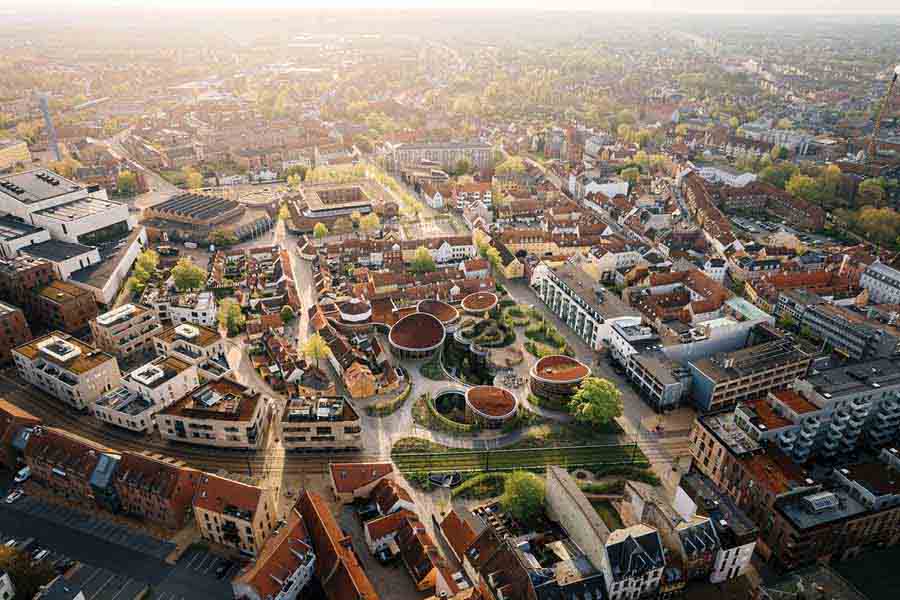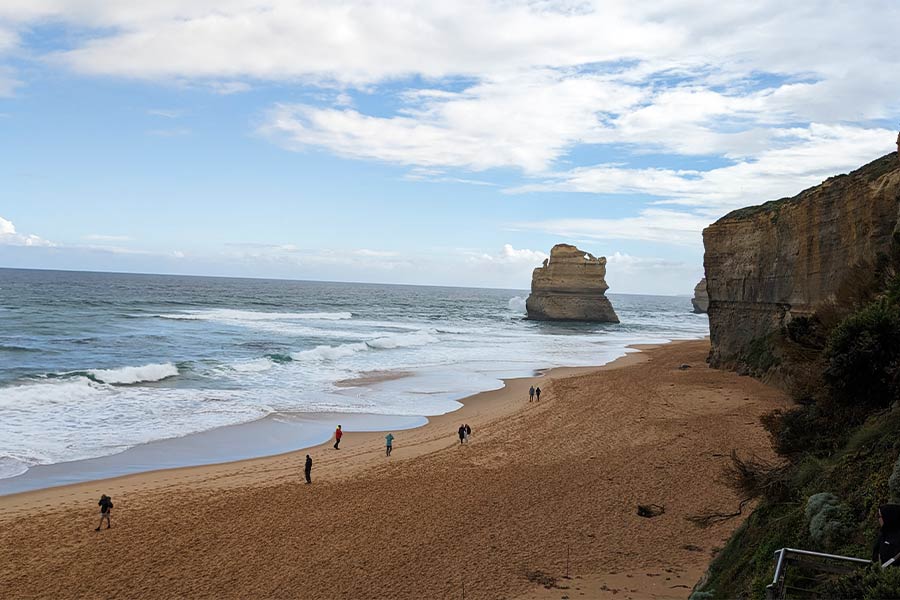The most typical of scenes in Odense, the birthplace of Danish author Hans Christian Andersen, is out of a fairy tale — a cobbled road, toylike houses, big fat roses blooming on bushes near the doorstep, flowered curtains at the window and a table groaning under the weight of delicious roasts and cakes. One can almost picture the child from The Little Match Girl, with her nose pressed on the pane, staring hungrily inside or the fir tree standing proud and tall beside a blazing hearth.
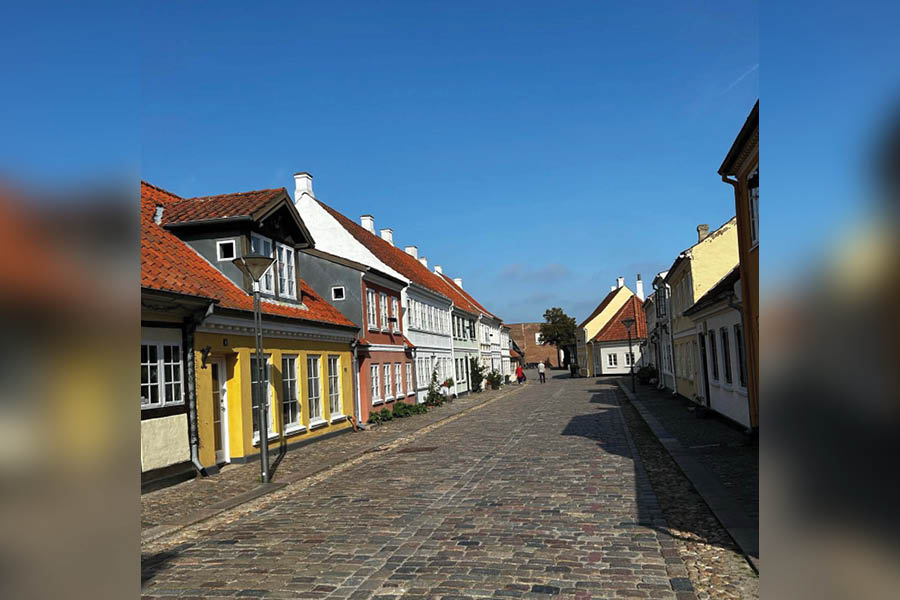
A glimpse of the old town in Odense
It seems unearthly, almost unreal that this old town has been so carefully preserved amidst the bustle and rush of the 21st century world. Beyond is modern life, the screech of tyres, the supermarket selling tinned food and Danish beer, the Odeon music and theatre house and the KFC store. And yet, lo and behold, you turn a corner, you blunder down a narrow road, then another, past the cycles chained to the sidewalks and the carefully lined rubbish bins till suddenly you have slipped through the bubble and entered the land of the fairy tale. There stand the tiled houses brightly painted amidst narrow cobbled roads, looking exactly as they must have been when Hans Andersen was born in 1805. There, amidst the church spires and the chimney stacks, I can almost see a poor child, ragged and plain, a headful of stories as he plays with imaginary characters in the bristling cold and narrow streets of this beautiful old town.

Colored traditional houses in old town of Odense, Denmark Shutterstock
H.C. Andersen was born into a poor family in a one roomed house. His father (also called Hans) was a shoemaker, who told him wondrous stories from the Arabian Nights, thereby enkindling a fervid imagination that would remain with young Hans all his life. His mother, a washerwoman, was dismayed at his love for stories and set him to work as an apprentice in a series of difficult jobs — first as a weaver, then in a tobacco shop and eventually at a tailor’s shop. Poverty forced the family to move to another house on the outskirts of the town, a grim little place they shared with 12 other people. There was no luxury of space, no garden to play in, no toys to play with and perhaps the child became accustomed to weaving stories in his mind.
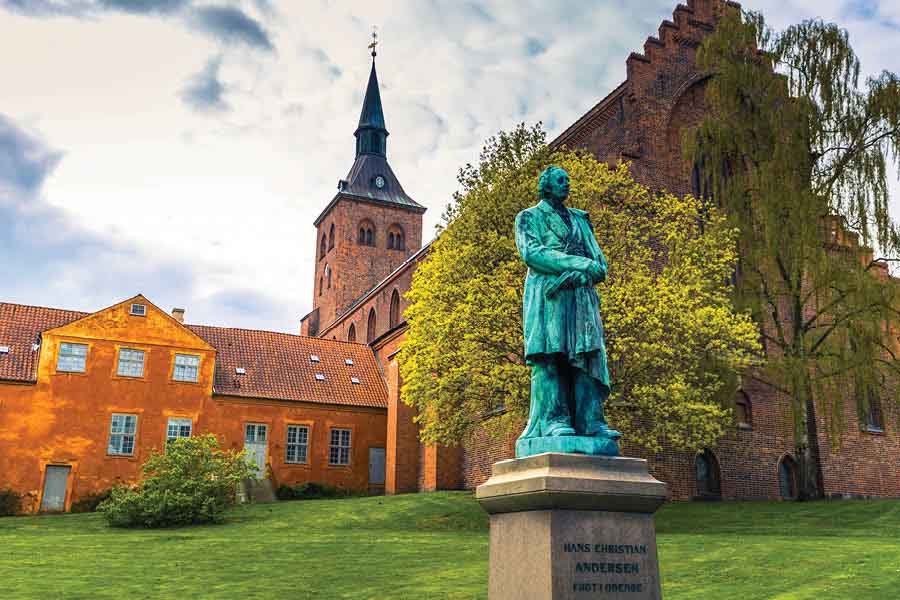
Cathedral of Saint Canute and Statue of Hans C Andersen in Odense, Denmark Shutterstock
Young Hans’ father died suddenly when he was 11. At 14, Andersen set off to Copenhagen to find his way in the world, moving from being a choirboy to giving ballet performances to working rather desperately as menial labour. Fate finally smiled on him and he received attention from richer patrons who paid him to finish his schooling and enter University. From the 1830s, he received a stipend for travelling, wrote his first few books, including fairy tales and became somewhat of a celebrity. He never returned to Odense again. For those who disdain fairy tales, or have forgotten what it feels like to listen to them, Odense is worth a visit.
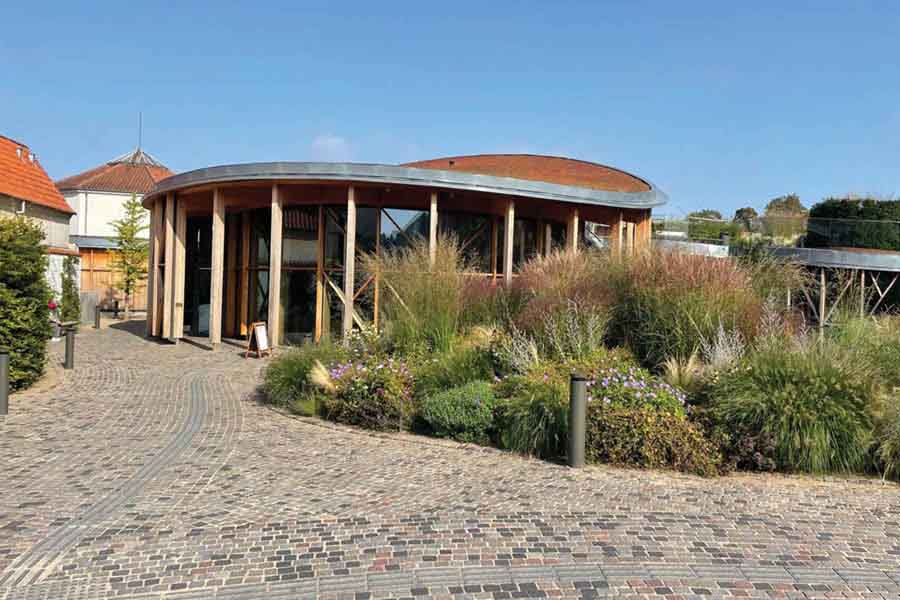
Hans Christian Andersen House Museum, Odense
Andersen’s old house has been incorporated within the precincts of a beautiful new structure known as the new Hans Christian Andersen Museum. Designed by architect Kengo Kuma and inaugurated in 2021, in the middle of the pandemic, it is an architectural wonder. A flat building is abjured for a top-like structure which rises in a spiral, a billowing upward curve, fitting tribute to a man who rose above his troubled life to create the world of faerie.
As you enter the museum and walk up the ramp, your feet touch hidden sensors, cunningly concealed in floor and ceiling that activate into a burst of sound, light and visual extravaganzas. Move a step forward and you can hear voice-overs recreating Andersen’s life in dialogue. Move a couple of paces ahead and a curtain shimmers, the lights dim and blaze and you are surrounded by swallows or ducks or butterflies. You are enveloped by a rush of sound creating the stormy seas in which the tin soldier drowned, or the chatter of sly tailors pretending to stitch imaginary clothes. At places there are stools where the visitor can participate in interactive sessions, pressing buttons and entering hidden realms through sound-and-light presentations. At other points there are installations, like that of mattresses piled high to decipher a true princess from a false one (The Princess and the Pea) or large circles of sponge resembling rocks, upon which the mermaid sat and gazed out onto the sea. One of the most beautiful artworks is that of a golden bird, larger than life, encircled by a gilded cage, its melancholy eyes the very epitome of a broken spirit as it sits enslaved, helpless to the whims of the soulless emperor (The Nightingale).
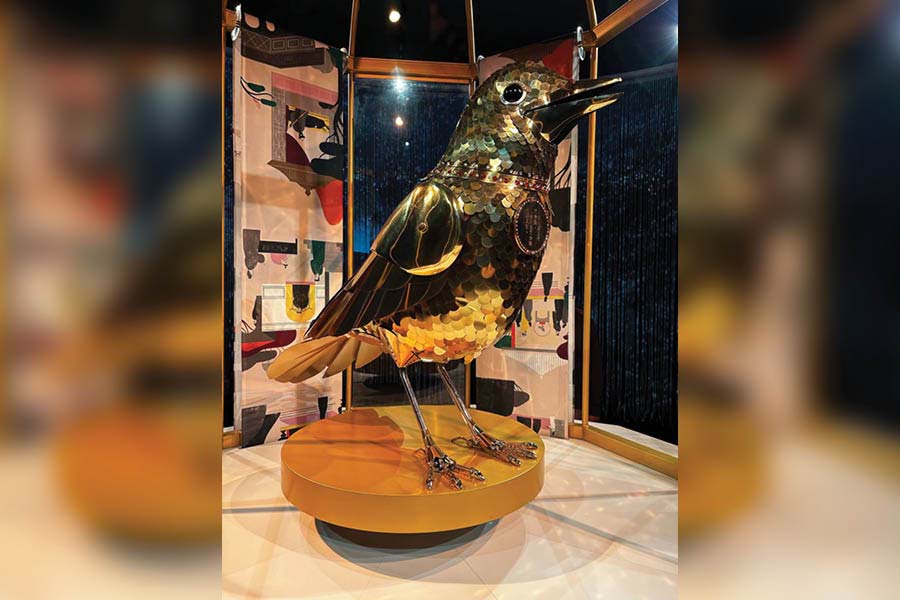
An installation inside the museum
The museum covers almost 70,000 square feet, with large glass paned windows through which you can see gardens entwined within the exhibition space. One of the very first exhibits uses pieces from Andersen’s own life, his battered travelling bag, one of a pair of boots, a coil of rope he always carried with him on his travels. The dialogues used in the interactive sessions bring alive the capricious, troubled life of the great writer. Hans Andersen had a difficult, poverty-stricken childhood, was troubled by dyslexia at school, suffered in his relationships with women, was probably bisexual and carried his attachment for a male friend to his grave in secret and had multiple social anxieties. All of this is brought out through music and dialogue.
A signpost informed us that the script was composed by Lemony Snicket or Daniel Handler, creator of the immortal A Series of Unfortunate Incidents. Certainly, there is a cinematic intensity to the presentation. At the end of the tour, we suddenly passed from the sound and light exhibition to Hans Andersen’s own house. We pulled up short! A tiny room, a tinier coal hob and that was all. This was the squalid space into which the creator of the fairy tale, as we know it today, was born.
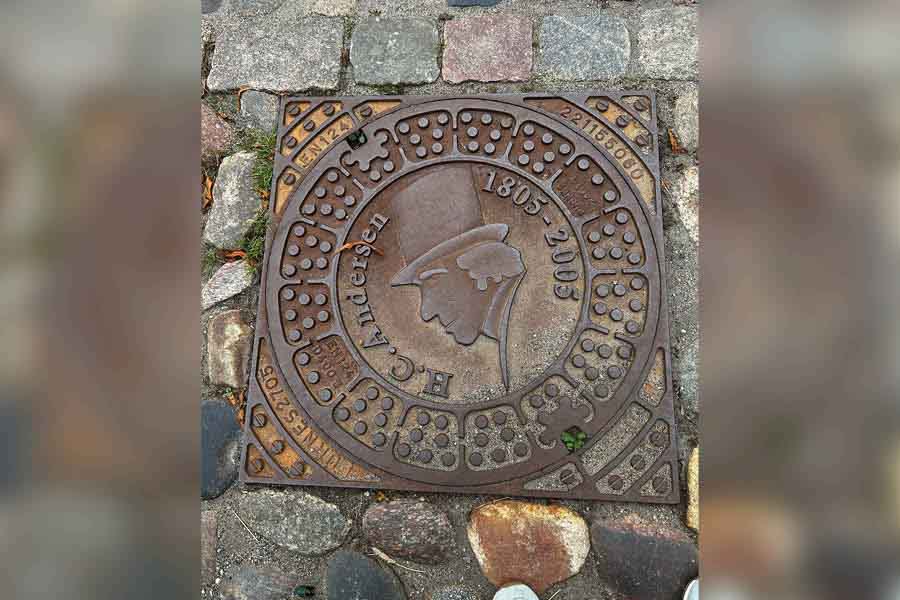
Remembering H.C Andersen in Odense
The historic old town is effortlessly interwoven with the surrounding modern city. Odense is Denmark’s third largest city with a population of about two hundred thousand. The museum area and the old town blend effortlessly into one another, a seamless transformation where urban areas are connected with historic buildings so that past and future seem to fuse easily enough. In front are plazas and shops, behind is a row of old houses and paved roads so that one tends to move between two worlds.
The visitor can enjoy the museum with glazed eyes and beating heart and, wandering to the rear portion, find oneself on a modern road, separated from the Anderson house by a garden. Within the old town the attention to detail is immaculate. The sewerage covers are artistic objects in their own right, with iron fashioned into illustrations of Anderson’s life and times. The houses are painted in an assortment of colours, yellow and red, orange and white. A shop displaying Christmas ware had tinsel snowflakes and merry snowmen in an impossibly picturesque melange, as if it was straight out of an animated film.
It was Monday but the streets were deserted. Perhaps the people of Odense were filling the bars and shops of the city centre or had taken the two-hour train ride to Copenhagen, unmindful of the beauty around them. Meanwhile a group of men and women speaking Spanish, English, German were staring at their phones and googling their way towards Andersen’s house. A young Japanese girl asked us for directions and a South Asian boy shouldered his backpack and marched resolutely on towards the entrance for tickets. Sitting at a cafe outside the museum and opposite the house in which Andersen was born, watching tourists from around the world tramp up the winding streets, we enjoyed the view. The sun shone brightly, cotton wool clouds drifted across the sky and the flowers gently bobbed their heads. But over all this hung the gaze of one of the finest story tellers in human history.
Hans Andersen’s stories are grim tales of compelling sadness, where one can be judged by appearances and tricked by fraudsters, where love turns to ashes and dignity is torn to shreds, a darkling plain, to paraphrase Arnold, of sorrow and flight. The Hans Andersen Museum at Odense teaches us to value beauty and love, for above it all is the fragility of life and the pain of human experience.
Monabi Mitra is a writer and professor who teaches English at Scottish Church College, Kolkata.
